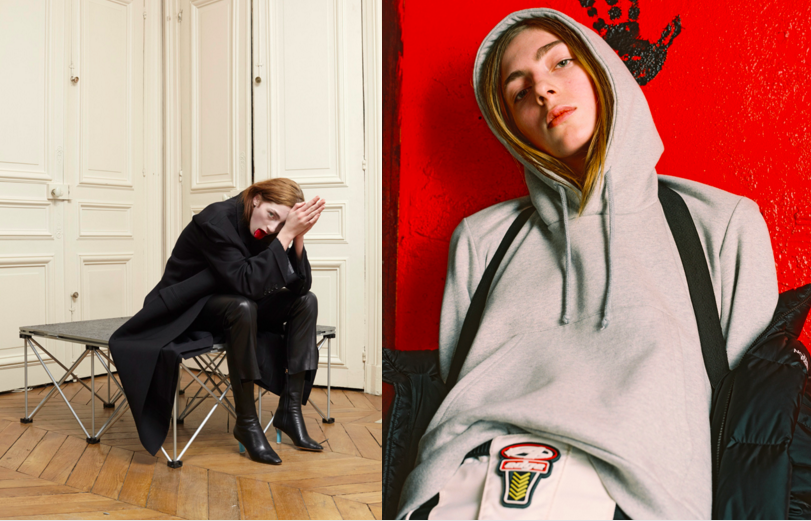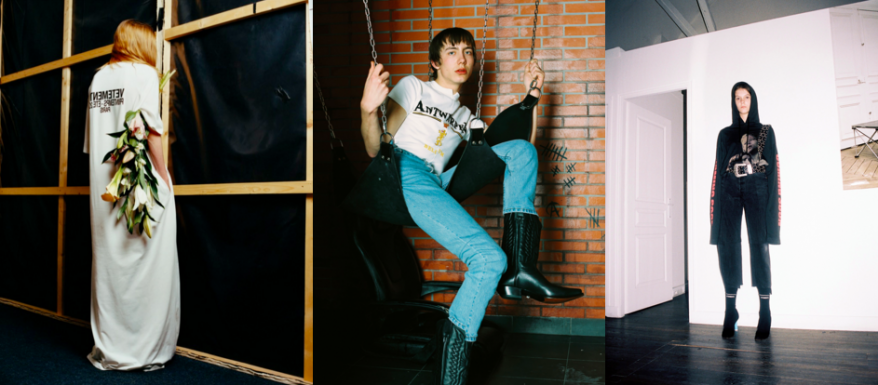Unboxing The Buzz Behind Vetements (And Who’s Stocking It In London)

In an industry notoriously difficult to break through, Parisian brand Vetements made waves immediately with its first collection in 2014. The reigning logic of the brand is simple. Spearheaded by the Georgian fashion designer Demna Gvaslia, 34, Vetements was borne out of a bedroom side-project among like-minded peers who were rapidly growing exasperated by all the excess, exclusion, and fantasy that has formed the foundation of the industry. Vetements was conceived for the simple purpose of creating clothes that are meant to be worn; clothes that people want to and are able to have. The rebel-with-a-cause motive found resonance with both buyers and sellers: Vetements netted 27 stockists in its first season and now that figure tops 80.

The Rise of Demna Gvaslia
When Gvaslia, whose prior track record includes Maison Margiela and Louis Vuitton, was picked up by Balenciaga as Alexander Wang’s successor last autumn, the spotlight started to shift. And when news coupled with the selection of Vetements as one of the eight finalists for the 2015 LVMH Prize, which barrel-rolled the no-name brand into the limelight as the label to watch in 2016. Everything about Vetements is a push for innovation: from the gender-defying to its season-defying collections (Gvaslia stirred a buzz at the 2015 fashion week Paris in the premiere of womenswear, the first model he sent out was a man.) Vetements designs thick leather jackets and heavy sweats for the S/S while putting out airy dresses for winter; the overarching aesthetic borrows from an indistinguishable melting pot of cultures – perhaps a reflection of the diverse team that forms the Vetements cohort.
While it’s true that other rising stars (such as JW Anderson) are also making headway by pushing the traditional gender binaries held onto by the fashion industry, Vetements is unique in that it is an anonymous team effort. In other words, it is the absolute opposite of the name-led, image-conscious, self-branding world of high fashion: where designers are photographed and lusted after as often as the actual work they produce. The Vetements collective, comprised of 18 different designers who are mostly in their early and mid twenties, is equally as diverse as the clothing they make, hailing from many different countries and cultures. The average age is early to mid-twenties, and the group speaks 13 languages in total.

“It’s very product-orientated. There are no illusions of, ‘Oh, we want to create a dream about fashion.’ We just want to create clothes that people want to have.”
Less than two seasons in, the brand has already undergone some massive aesthetic changes and it doesn’t seem intent on slowing down anytime soon. And perhaps that’s part of the allure. Vetements is always two steps ahead of the curve, forever on the cusp of attainment and slipping through the fingers of its admirers (even the perennially avante-garde Dover Street Market was left empty-handed when it ran out of the massively popular cut-up T-shirts (above, centre) that featured in Vetements’ A/W 15 collection.) Ironically, in its strategy to design “normal clothes for normal people” (The brand steers away from using professional models in both live shows and shoots), it has created a buzz f0r its clothing which is more coveted than those of “luxury” brands. Regardless of the merciless nature of supply and demand, Vetements has made its statement loud and clear: Normcore is the new revolutionary.
A willingness to adapt and take on new forms and styles also puts Vetements out in the left field, as iconic fashion houses have this tendency to ride on the selling power of staying put, appealing to traditional values and notions of legacy, ribbon-wrapped in the fetish for luxury. Again, these are all qualities that are both outdated and largely unrelatable for the general public. Simply put, Vetements directs all its attention and energy to the parts of our culture–that is, transience and adaption, misfits and normatives, unremarkable realism, average days and no-names–that the fashion industry does its best to stifle through glitz and glamour, fantastical narratives and post-production ecstasy. It’s through embracing the normative that Vetements becomes something extraordinary. Whether you like the approach or hate it, Vetements is a force to be reckoned with, and undoubtedly a name to keep an eye on.

